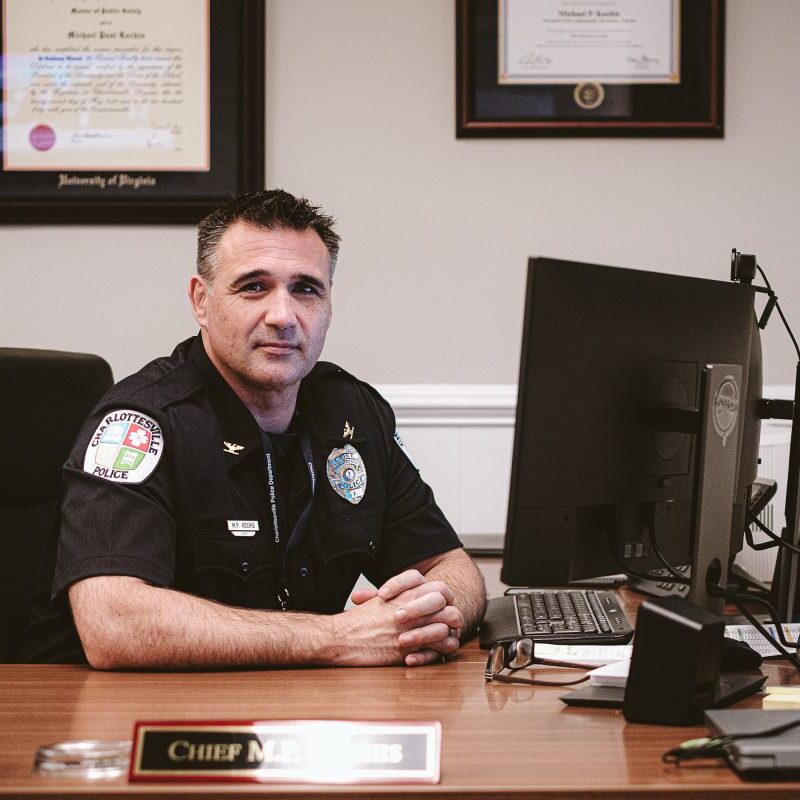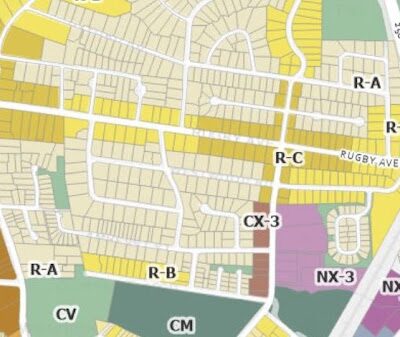| For an update on City Council’s May 19 public hearing on water needs, click here. |
In many ways, the latest flap over the community’s long-term water-supply plan is quintessential Charlottesville. It involves most of the basic elements of your typical local story—excruciating planning, expenditures of public money, and questions of human desires vs. ecological needs.
But the current water-supply plan is also a victim of what could be called the Academic’s Dilemma—our tendency to study a thing to death and continually delay meaningful action. A university town that draws a lot of retirees, Charlottesville has more than its fair share of smart people with time on their hands and the intellectual edge to tackle local problems, as well as wealthy people with the means to pass the job off to someone else, giving us plenty of special interest and watchdog nonprofits. The good thing about it is that a lot of talented people can pool their knowledge and come up with some fascinating solutions to problems people didn’t think would get solved —like a community water-supply plan in 2006. But it also means that a lot of talented people can pool their knowledge and come up with some fascinating reasons to keep studying—and keep studying—and keep studying—that same water-supply plan. It makes for a lot of controversies that would seem out of place in most communities.
 “It’s a question of forces and interests that are not only pro-growth, but pro-growth forever and at high levels based on a vision that I don’t necessarily share,” says Rich Collins. |
The difference this time is that, unlike the last heavily criticized plan (to build a pipeline from the James River to meet local water needs), this 2006 plan arose from broad community discussions and compromises among business interests, environmentalists, bureaucrats and engineers. In a rush to put the James behind us, did we rush into a foolhardy plan, a notion to connect reservoirs with a pipeline? Or are there fewer merits in opponents’ arguments—and more complicated undercurrents—than meet the eye? And can a beleaguered agency, the Rivanna Water and Sewer Authority (RWSA), ever escape from a perception of mismanagement?
Controversy from the loins of compromise
Charlottesville is no stranger to new water supplies—for the past 150 years [pdf], we have expanded the infrastructure in roughly 20-year increments. The RWSA is no stranger to water-supply planning —but it is a stranger to an approved long-term plan.
Charlottesville and Albemarle gave birth to the RWSA in 1973 as a way of getting federal money for wastewater treatment infrastructure and facilities. RWSA sells treated water at wholesale rates to the City of Charlottesville and the Albemarle County Service Authority (ACSA), a body that handles water for county ratepayers that live inside the service area. All told, RWSA serves about 40,000 users, which include businesses and the University. Its board is what former City Councilor Kevin Lynch calls “four bureaucrats and a developer,” comprising an appointed chairman, homebuilder Mike Gaffney; City Manager Gary O’Connell; County Executive Bob Tucker; ACSA Director Gary Fern; and the City of Charlottesville Director of Public Works Judith Mueller.

The pipeline that solves many problemsThe water-supply plan hinges on a 9.5 mile pipeline from the South Fork Reservoir to fill the Ragged Mountain Reservoir. In addition to leading to a water capacity that meets projected demand through 2055, the $56 million pipeline, to be built largely on right of way from the languishing Western Bypass, keeps RWSA from having to replace a 13 mile pipeline from Sugar Hollow and allows water to be shunted between reservoirs in case one treatment plant goes down. |
Twice, RWSA has thought it had a long-term water supply solution and raised water rates and spent money to go along with it—only to find huge problems that shot the water plans all to hell. Both solutions came from consultants. In 1983, RWSA spent $6 million on a Buck Mountain Creek site to build a new reservoir under the advice of consultants—only to encounter an endangered water species in the 1990s. RWSA tried again with a new set of consultants and a $13 million 30-year plan [pdf] in 2002—only to discover that miscalculations in the plan didn’t produce enough water supply.
Had that plan fallen through a couple of years earlier, the community might have just shrugged in frustrated resignation. But the 2002 drought—the worst drought on record for the area—had instilled a new level of urgency. Charlottesville and Albemarle underwent mandatory drought restrictions that had us eating off paper plates and driving dirty cars and generally freaking out that we wouldn’t have enough water to get through the dry spell. Suddenly the residents of lush, humid central Virginia were having visions of their home as the parched West.
For many citizens, the status quo—or even slow planning (and particularly bad planning)—was becoming intolerable. Rich Collins, who had been chairman of RWSA for one two-year term, wasn’t reappointed in 2003. Gaffney was installed in his place by the county Board of Supervisors. Soon, a pipeline from the James River seemed to become the likely water-supply option.
The James option was despised for a number of reasons. Most obviously, it was a source that the local community didn’t control (the water would flow down river from Lynchburg), and was therefore more likely to have pollutants. Second, it was a source that could exacerbate future infighting among communities during droughts, as has happened in Georgia, Alabama and Florida. Finally, it would effectively mean abandoning the South Fork Rivanna Reservoir as a component of the water-supply plan—and the protection of that watershed had been crucial in the argument that lead to rural area downzoning in 1980.
A disparate coalition of environmentalists and citizens—including Collins—formed under the moniker Drinklocalwater.org, intent on fighting the James River plan. Members of the group had various agendas—some wanted to increase stream flows to the Moormans River, some wanted a less expansive water supply—but just about all of them wanted desperately to keep the water supply local.
Members of Drinklocalwater.org took on just about every facet of the plan in a blitzkrieg against the James River pipeline, and many of the arguments being repeated now against the current plan were said then against the James—we don’t need that much water; dredging hasn’t been fully explored; we’re abandoning our current reservoirs; there are cheaper alternatives.
In the midst of all the theorizing and complaints, Ridge Schuyler, Piedmont program director of The Nature Conservancy, and a team from Virginia Tech, hit on the idea of a pipeline connecting the South Fork Reservoir with the Ragged Mountain Reservoir.
“Since it was such a simple idea, I thought someone else must have thought of it,” says Schuyler.
What makes Ragged Mountain a pristine reservoir is that its watershed is so small, a mere 1.9 miles. But that also means that the reservoir doesn’t fill up very quickly, particularly if human beings are also sucking water out. With a 9.5-mile pipeline from the South Fork, which has a huge watershed of 259 square miles, a higher dam at Ragged Mountain could accommodate enough water to meet 50 years of demand while also keeping the water supply local and increasing flow in the Moormans.
 “In the context of further discussions, I think it’s helpful to determine what are the reasons and what are the purposes of dredging,” says Tom Frederick. |
Past that, this simple solution meant that RWSA wouldn’t have to replace a 13-mile pipeline that had previously fed the Ragged Mountain Reservoir from Sugar Hollow.
Neither RWSA nor Drinklocalwater.org found a fatal flaw in the reservoir-to-reservoir pipeline idea. The plan continued to draw community support, and a $143 million water-supply plan was ratified by City Council and the Board of Supervisors in June 2006. The state Department of Environmental Quality issued a permit for construction of the components of the plan in February 2008. All that it needs now in terms of permits is one from the U.S. Army Corps of Engineers.
Rich Collins was one of about 150 people involved in the Drinklocalwater.org coalition who signed a letter in May 2005 [pdf], sent to the county Board of Supervisors chairman and the city mayor, that outlined the basic elements of the current water supply plan, including a higher dam at Ragged Mountain Reservoir and a pipeline from the South Fork Rivanna Reservoir, along with a slate of other components like maintenance dredging of South Fork and a drought management plan.
“We were all so elated,” says Collins of the time when the idea was brought forward. The other signatories provide a who’s who of local environmentalists and watchdogs, including the Piedmont Environmental Council; Advocates for Sustainable Albemarle Population; the League of Women Voters; the Southern Environmental Law Center; the Piedmont Group of the Sierra Club; Citizens for Albemarle; the Rivanna Conservation Society; the Friends of the Moormans Rivers; and a slew of others.
But more than two years later, in the fall of 2007, Collins met with Ridge Schuyler face to face and said that he was withdrawing his support.
“I didn’t know how big that reservoir was going to be, I didn’t know how much land would be taken up,” says Collins. “I said it right to his face, ‘I’m going to fight this.’”
Environmental costs?
To be sure, the current plan involves some environmental impacts. About 180 acres of forest at Ragged Mountain Reservoir will be cut down in preparation for filling the reservoir. Fourteen thousand linear feet of streams will be inundated, as will 3.4 acres of wetlands.
Before even Collins opposed the plan, Dede Smith, former director of the Ivy Creek Foundation, publicly opposed it, largely on the grounds that it inundates the trails and means the loss of forest at Ragged Mountain. Smith was the only one to speak at the June 2006 City Council meeting when the plan was adopted. She has since joined with Collins to form the Citizens for a Sustainable Water Plan.
But the city only opened Ragged Mountain for trails in 1997—the land was purchased with UVA for a reservoir in 1885.
“This is not a city park,” says Jeff Werner of the Piedmont Environmental Council and a key member of Drinklocalwater.org who supports the current plan. “This is a city reservoir.”
Karen Joyner, the current Ivy Creek Foundation director, is working with RWSA on new, more extensive trails, which RWSA is paying for. In addition, The Nature Conservancy has brought 340 adjoining acres of land into conservation easement and plans to make it part of the trail system.
As part of its mandated mitigation plan for the loss of streams and wetlands, RWSA is preserving and restoring 75,000 linear feet of streams at Buck Mountain (where it can’t build a reservoir), and restoring four acres of wetlands in the city between Franklin Street and Moores Creek. The plan is valued at $7.7 million.
One issue raised as an environmental hazard of the plan—the extension of the Ragged Mountain Reservoir under Interstate 64—is actually alleviated rather than worsened under the current plan. It calls for basins to be built on the banks around I-64, which means that if a toxic spill occurred on the roadway, the material could be captured and managed rather than seeping into the water supply.
“That hazard has existed for 40 years, and we’re now proposing a way of mitigating that hazard,” says Frederick.
 “If I knew this [questioning of the plan] was working toward an outcome, and I were hearing compelling facts, I might go, ‘Hmm, let me hear,’” says Jeff Werner. “But I’m not hearing compelling facts.” |
But arguably the biggest environmental boon of the current water-supply plan is that it restores stream flows in the Moormans River. The South Fork of the Rivanna is fed primarily by two rivers, the Moormans and the Mechums, which each contributes about 30 percent of its flows (the other 40 percent come from an assortment of other tributaries).
Today, the Moormans flows at its natural levels only about 60 percent of the time. A group called Friends of the Moormans fought RWSA and had the agency pipe at least 400,000 gallons per day into the river, which represents only 2 percent of normal flows—and even that was a step beyond legal requirements.
Moormans stream flows would be restored to natural flows 99 percent of the time in the current reservoir pipeline plan. Water that would have been sucked through the pipeline to Ragged Mountain instead will feed directly into the South Fork—where some of it will be sucked to Ragged Mountain.
“What we saw with this process was the ecological equivalent of pulling a rabbit out of a hat,” said Schuyler at a May 6 City Council work session.
Not everyone agrees that restoring Moormans stream flows is such a good thing. Collins blames the focus on the Moormans River on The Nature Conservancy. “Their proposal is beyond what I think is reasonably necessary and is beyond what we can afford to pay for, especially if those costs are put on city residents, by allowing them to close down that pipeline,” says Collins. “The fact is, the Moormans River has received so much emphasis in this game because it is a Nature Conservancy showcase project.”
Kevin Lynch also seems to think there’s too much emphasis on the Moormans. “If The Nature Conservancy wants to pay for the pipeline and pay for the additional level of treatment it would take to get the water to the level that the Moormans River is now, that’s fine,” he says, “but I fail to see why the rate payer should pay for that.”
But Supervisor Sally Thomas says, “We can still drink that water taking it out of the South Fork of the Rivanna and get the human value out of it without ruining the two rivers [the Moormans and the Mechums].” She still seems shocked that a water supply plan was found that could do it all. “I didn’t know there was any answer that would get us enough stream flows and enough to drink.”
 Dede Smith, former director of the Ivy Creek Foundation that manages trails at the Ragged Mountain Reservoir, has long opposed the current water supply plan. She was the only member of the public to speak against it when City Council approved the plan in June 2006. |
“We’re flooding 180 acres of city reservoir,” says Werner. “In return, we’re getting [340] acres of conservation easement, and restored stream habitat and restored wetland, and the jewel of it all, a restored riparian system, the Moormans. I don’t know how you make that comparison. Maybe I’m an awfully cold environmentalist.”
Dredging for dredging estimates
Those opposed to the current plan to raise the Ragged Mountain dam and build a pipeline have presented a scattershot of alternatives: use the Shadwell rock quarry (which isn’t available for at least 20 years), rebuild the Mechums River pumpstation (which requires an upgraded pipeline), simply provide less water. Because their priorities differ, with some wishing primarily to keep Ragged Mountain as is and some wishing primarily to preserve the South Fork Reservoir—they haven’t committed to a viable counterplan with solid cost estimates, which are difficult to calculate because the current plan addresses systems that would otherwise have to be replaced, like the current Ragged Mountain Dam and the Sugar Hollow pipeline. But the centerpiece of their argument that they can agree on is this: Dredging is more affordable than originally discussed.
Dredging basically means sucking dirt from the bottom of the reservoir in order to restore capacity. But sucking dirt from the bottom is the easy part—the hard part of dredging is figuring out what to do with the dirt you suck out. There has to be some nearby site to dewater the material. Depending on the kind of material, it can then be sold, perhaps as fill for construction sites or as topsoil for farmers—otherwise, you have to pay to get rid of it.
If the reservoir is never dredged, it will gradually fill in, reducing usable capacity to about 17 percent of its original capacity by 2055. There is some dispute about what the reservoir would look like by that point, but critics paint a picture of a wide, smelly swamp, which has motivated many people who live near the reservoir to speak out. Moreover, the reservoir is used by boaters, fishermen and the UVA crew teams.
No one disputes that some dredging should occur at South Fork. What is in dispute is whether it should be part of the water-supply plan.
When he was on City Council, Kevin Lynch supported the water-supply plan and voted for it in 2006. He says he voted for the permit for the water-supply plan, not for the plan itself, though the Council agenda [pdf] lists the item as the “long-term water supply.” At the time, he said he supported the outcome [pdf] and the recommendation as the least environmentally damaging one that would provide good local drinking water, according to City Council minutes.
“The big assumption that we were all working on was that dredging was prohibitively expensive,” Lynch says. “It was only after Freedom of Information requests to Rivanna that we found out that two dredging companies had contacted Rivanna because they believe it could be done for substantially cheaper.”
A 2004 report from Gannett Fleming shows that 2 million cubic yards of sediment must be removed from the South Fork Reservoir now in order to restore 5.5mgd of capacity, and 3 million cubic yards of additional sediment must be removed over 50 years to maintain that capacity. Using very conservative estimates of the cost of disposal, the 2004 report estimated the cost as between $128 million and $145 million, depending on how much of the sediment could be sold. A 2008 update [pdf] put those costs at between $199 million and $223 million.
Supervisor David Slutzky and the PEC’s Jeff Werner have looked over Lynch’s FOIA’d documents related to dredging. Neither saw a smoking gun.
“What he showed me didn’t persuade me because he was showing me materials that talked about prices that were far below the estimates that the consultant provided, but they weren’t apples to apples because they were only pieces of the puzzle,” says Slutzky. “The pieces that were left out were ginormous pieces.”
“Those who see dredging primarily as a way to meet water supply needs have to demonstrate that it is a more cost effective and environmentally friendly and legally permitable alternative than the plan that’s in place now,” says city Mayor Dave Norris. “And that’s a pretty high bar. The evidence is still coming in, and I haven’t made up my mind that it’s not doable, but it’s not a slam dunk by any means.”
In the Gannett Fleming estimates, 78 percent of the costs came from what to do with the dredged sediment. And only last week, a local consortium came forward with a proposal that could solve that huge question mark. Pat Enright, CEO of Dominion Development Resources, says the consortium, led by DDR, has a “turn-key” solution to dredge the two million cubic yards of sediment from the reservoir by pumping the dirt to the site of a rock quarry off Rio Mills Road (it’s owned by Dr. Charles Hurt’s investment company). He estimates a price of around $24 million to $29 million to remove 2 million cubic yards of sediment.
Perhaps the best thing about his proposal is that it doesn’t depend on having to sell the dredged material. “If it were sellable, if there was a market for it, that would definitely become an option,” says Enright. “But the pricing of any concept doesn’t rely on our ability to sell it or not.”
Still, the proposal may be more convincing as a part of a maintenance dredging plan than as a part of the water supply plan. Schuyler, using Nature Conservancy modeling, shows that 2 million cubic yards dredged would still mean we’d have to build a dam 40′ higher at the Ragged Mountain Reservoir, saving a mere 14 acres.
Schuyler says, however, that this plan makes for a perfect opportunity to talk about maintenance dredging. First we must figure out why we want to dredge—so that we can figure out who should pay for it. If dredging is not just about the water supply but also about recreation on the lake and property values for adjoining homeowners, then perhaps the costs should be split between rate payers and tax payers.
“In the context of further discussions, I think it’s helpful to determine what are the reasons and what are the purposes of dredging,” says the RWSA’s Frederick. “Is it to increase storage? Is it to increase water quality? Is it to increase aesthetic views of the lake? Is it to increase recreational opportunities? Or is it perhaps some combination of all those things?”
A way to stop growth?
Growth is a big underlying issue here, at least for some pipeline critics.
Allegations about anti- or pro-growth agendas are nothing new in water-supply plan debates. In 2004, when the James pipeline looked imminent, some environmentalists accused developers and the RWSA—whose board then, as now, was led by homebuilder Gaffney—of pushing the plan as a way of creating an endless supply of water for future growth. Before, when Rich Collins was chair of the RWSA, he was accused of stalling on water improvements because of his positions on slow growth. Collins is, after all, a founding member of the Advocates for a Sustainable Albemarle Population (ASAP).
Is an agenda to slow growth part of the reason that Collins is fighting the plan now?
Indeed, Collins does argue that land-use decisions —that is, decisions to rezone land for new developments, etc.—should be coordinated with the costs of providing additional water and sewer treatment. “Right now, the [RWSA] does not have any proffers in the land development game.” He thinks that we should only prepare for “reasonably foreseeable needs,” which means approved projects like the 3,100 units of Biscuit Run, instead of forecasting future growth.
 “What we saw with this process was the ecological equivalent of pulling a rabbit out of a hat,” says Ridge Schuyler, noting that the pipeline allows the Moormans to return to normal streamflows while also supplying enough water. |
The county went through a dramatic downzoning in 1980 to one house per 21 acres, and much of the justification came from the idea of limiting erosion in the watershed in order to slow the rate of sedimentation of the South Fork Reservoir. Collins is afraid that if the South Fork Reservoir is abandoned, “it would remove the major rationale that lies behind all the land use controls in the western part of the county. And once that rationale is removed, you have a much stronger case for developing at higher densities than you do now.”
“This does have a lot to do with growth,” says Collins, though he is quick to point out that he’s just representing himself with that sentiment, not the Citizens for a Sustainable Water Plan at large. “I’m not embarrassed nor do I feel like I’m constrained to say that the bigger issues have to be addressed.”
ASAP, however, still supports the water-supply plan, according to its president, Jack Marshall. “We haven’t done anything since we endorsed the original plan along with other treehuggers,” says Marshall. “We haven’t addressed the recent controversy.”
Collins thinks that there is an issue with RWSA that goes beyond the other issues that have been raised of late. “I believe that the institutional issues are much more significant than any issues of contractor connivance or greedy individuals,” Collins says. “It’s a question of forces and interests that are not only pro-growth, but pro-growth forever and at high levels based on a vision that I don’t necessarily share.”
For his part, Lynch sees this as too big of an investment of the current taxpayer for future water demands.
“I don’t believe that if you asked the average person on the street right now in 2008 that forecasting perpetual growth is viewed positively anymore,” he says. “I don’t think we should stop growth, but I don’t think that we should subsidize it either. The only ones who are interested in growth are the developers and the bureaucracy, and those are who are making the decisions right now.”
Lynch’s point has gotten at least one elected official’s attention. Mayor Dave Norris thinks that a possible outcome of all of this might be that the RWSA board is restructured with at least one elected official from each of the local bodies.

The raising of the damThe City of Charlottesville and UVA bought the Ragged Mountain area in 1885 for a city reservoir, building the upper dam (left) and expanding the reservoir with another dam in 1908. That dam is in need of state mandated repairs, and so the water supply plan calls for a new dam, 45’ taller, to be built below the 1908 dam. Design work is currently underway for the new dam. Critics argue that the environmental costs of losing trees at Ragged Mountain are too high compared to dredging. |
“I think it probably is time to look at getting some elected officials on the Rivanna Board,” says Norris. “I don’t actually believe those who have called into question the integrity of the Board members there. But I think it’s going to help in the future with instilling greater public confidence and accountability in the decisions that Rivanna makes. I’m sold on the idea.”
Overall, Frederick thinks that RWSA has been responsive and open about the water-supply plan. “In general terms, I think that the issues have been handled well given that there are some uncertainties that are difficult to express in some 30-second sound bite or in some simple terms,” says Frederick. “Certainly, I’m willing to suggest that recent information that we received—the opportunity to talk to a dredging consultant who was in town—has been helpful, has provided some additional insight, and I think it’s important that an agency like ours be open and flexible to new information.”
“I don’t smell a rat here,” says Supervisor David Slutzky. “I think the public process was well served.”
Frederick thinks that it’s time for the community to discuss maintenance dredging, and so does Schuyler, Slutzky, Supervisor Dennis Rooker and many others—so long as it doesn’t get in the way of obtaining the permits for the current water-supply plan. Otherwise, we might fall prey once again to the Academic’s Dilemma.
“I think at the end of the day, the fundamentals of the plan will remain, but we’ll have an enhanced plan that’s been enriched by the input of this group and the conversations that have happened over the last few months,” says Norris. “And we’ll have a better process in place for making these kinds of decisions in the future.”





